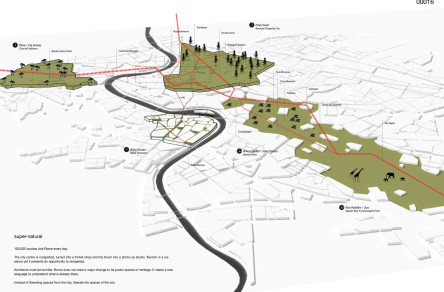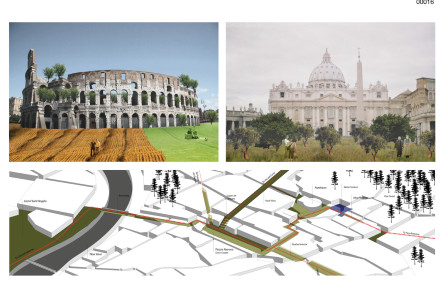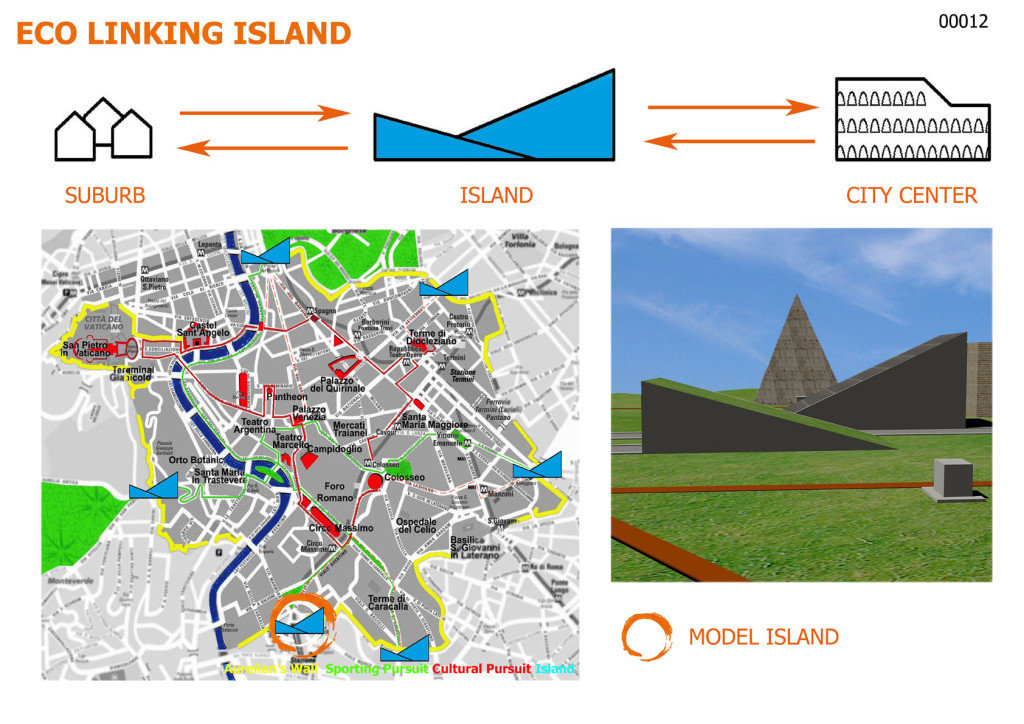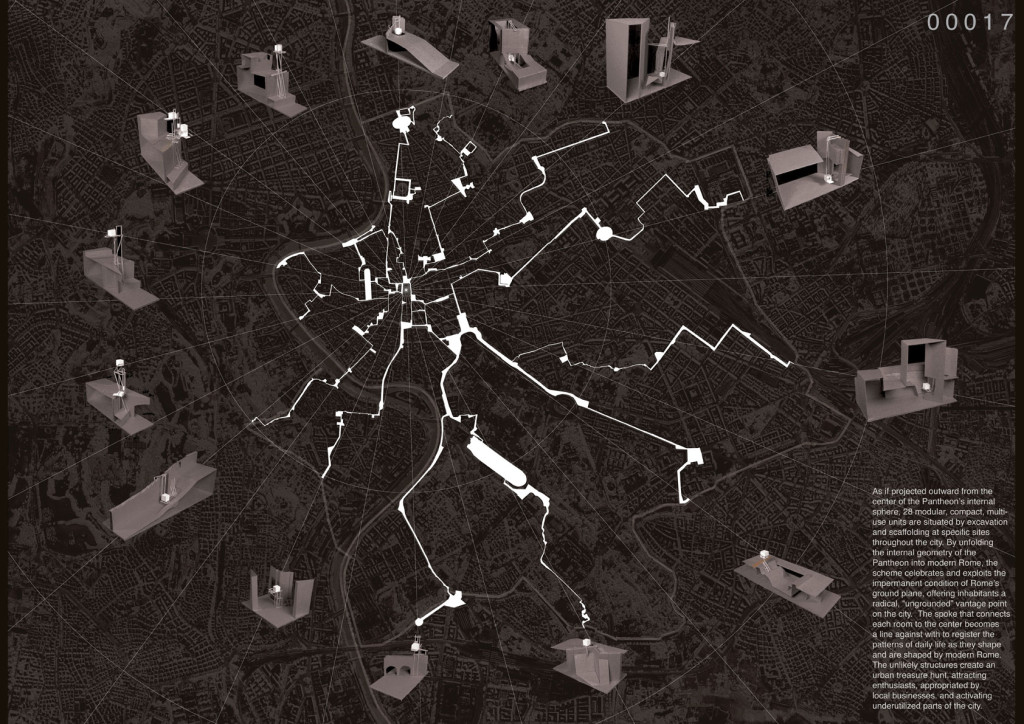Info:
Title: Super-Natural - Code: 00016Contest: Rome / 2010
By: A.Chau / M. Monla
Views: 2421 Likes: 0
Votes:
JUERGEN MAYER H. 0 FRANCESCO LIPARI2 FELIPE ESCUDERO6 FRANCESCO GATTI 7 MICHAEL CATON 64.2
Super-Natural


Super-Natural | Project Description
0 A modern city must strive to blur the separation between park and city, daily and occasional, accessible and non-accessible.
1 Sustainability on the scale of a contemporary city cannot function if perceived as an addition, as a regulation or as a technological afterthought. It must be integral to the daily life of the public sphere.
2 Green is the perfect basic planning tool. It is non-intrusive: it allows the city to evolve without erasing it and without turning it into a visual theme park. It is easy to implement: on the streets, on the building, inside the buildings. It is adaptive: from solar panels to urban agriculture, it is a container for a multitude of potential interventions.
3 100,000 tourists visitRomeevery day. The city centre is congested, turned into a trinket shop and the forum into a photo-op studio. Tourism is a nuisance yet it presents an opportunity to reorganize.
4 In the XVI century, pope Sixtus V used the paths of religious tourists to restructure the city around axes drawn between seven churches. We seek to do the same; to follow the tourists, and eventually to lead the tourists.
5 The reorganization of certain areas based on tourism can serve as a starting point for the reorganization of the entire city.
6 Architects must be humble.Romedoes not need a major change to its public spaces or heritage. It needs a new language to understand what is already there.
7 Instead of liberating spaces from the city, liberate the spaces of the city.
We plan four forms.
1. Olive + fig groves at Città del Vaticano. 2. Pine forest at Baroque city. 3. Wine groves in Trastevere. 4. Wheatfield + solar panels + zoo at the Foro Romano andAppian Way. The beaten paths of tourists are used to carve routes through and between these green blocks to reorganize contemporaryRome. The resulting proposal can be read at two scales of intervention.
1 THE CITY
The green blocks create a new identity forRome’s districts. They are easy to recognize, promote, and navigate. In the future, they can be adapted to include other areas ofRome. They are defined usingRome’s four major tourism sites:
a CittàdelVaticano
Olive + fig groves: Powerful symbols of peace, wisdom, glory, fertility, power, and pureness. The Bible cites these trees multiple times. Adam and Eve cover their nakedness with fig leaves, and it was an olive leaf that a dove brought back to Noah to demonstrate that the flood was over.
b BaroqueCityshopping area
Pine forest: The stately Stone Pine (Pinus Pinea) can exceed 25m in height, and is native toSouthern Europe. It can provide a canopy for the historic city.
c Rione Trastevere
The vines adorning building facades will complement the unique and upscale character of Trastevere and its myriad residents: artists, students, and foreign expats. It will also provide ample wine.
d Roman Ruins andAppian WayArchaeological Park
Wheatfield + solar panels + zoo: A productive way to integrate history with production, and complement new with old. The zoo to bring an element of fun into the mix – ruins can act like the English garden folly, and with juxtapositions between modern and ancient, create new bridges to the past.
2 THE STREET
Major axes, existing and new, have been identified by connecting important tourist monuments. Marking them in a hierarchical system is important to reorganize the city and create a functional Romefor the 21st century.
a Green carpet
Città del Vaticano,BaroqueHistoricCity, Roman Ruins, andAppian WayArchaeologicalPark: A green carpet to traverse and mark the city will be created through open areas and major streets, including Via del Corso, Foro Romano, and Via Appia.Cyprusand pine-tree lined boulevards, pedestrian grass-grazing streets, and wine and olive groves combine to create a natural wayfinding system.
b Tunnel
BaroqueHistoricCity, Trastevere: Paths will tunnel through key public buildings to allow nature to seep into the built environment.
c Bridge
BaroqueHistoricCity, Trastevere: Where paths cannot tunnel through buildings, access around and over top could be provided to create an artificial topography in the built city. From these vistas, the overall city can be easily understood for tourist and resident alike.






